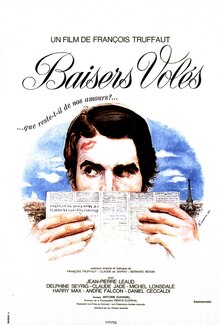Nana Mouskouri touches the heart of Charles Aznavour with the sad song
Que reste-t-il de nos amours? (What Remains of Our Love?) is a French popular song, with music by Léo Chauliac & Charles Trenet and lyrics by Charles Trenet.
The song was first recorded by Charles Trenet in 1943. It was used extensively in the François Truffaut film Stolen Kisses (1968), its French title, Baisers volés, having been taken from the song's lyrics. The song was also used in the films "Iris" (2001), "Something's Gotta Give" (2003) and "Ces amours-là" (2010).
The song is best known to English-speaking audiences as "I Wish You Love", with new lyrics by Albert A. Beach: introduced in 1957 by Keely Smith as the title cut of her solo debut album, "I Wish You Love" would become one of Smith's signature songs.
wikipedia
Que reste-t-il de nos amours?
Ce soir le vent qui frappe à ma porte Me parle des amours mortes Devant le feu qui s' éteint Ce soir c'est une chanson d' automne Dans la maison qui frissonne Et je pense aux jours lointains {Refrain:} Que reste-t-il de nos amours Que reste-t-il de ces beaux jours Une photo, vieille photo De ma jeunesse Que reste-t-il des billets doux Des mois d' avril, des rendez-vous Un souvenir qui me poursuit Sans cesse Bonheur fané, cheveux au vent Baisers volés, rêves mouvants Que reste-t-il de tout cela Dites-le-moi Un petit village, un vieux clocher Un paysage si bien caché Et dans un nuage le cher visage De mon passé Les mots les mots tendres qu'on murmure Les caresses les plus pures Les serments au fond des bois Les fleurs qu'on retrouve dans un livre Dont le parfum vous enivre Se sont envolés pourquoi? {au Refrain}



